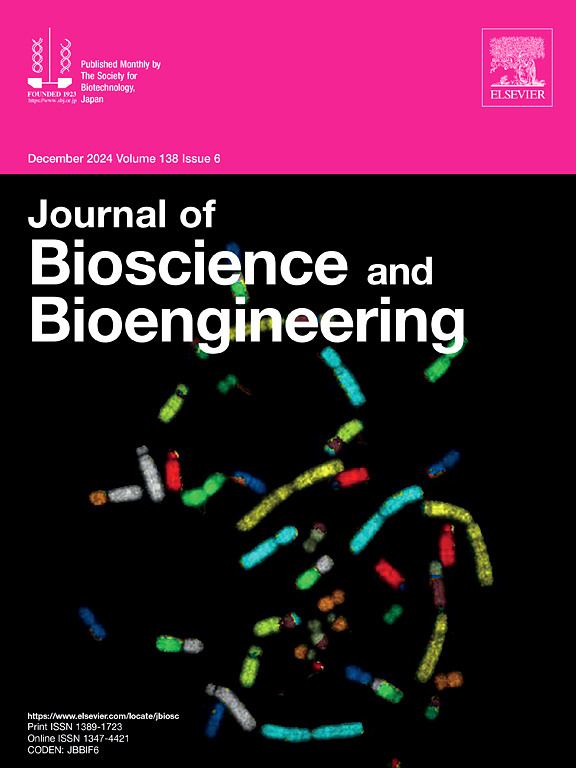Effects of transient change in temperature by daki warm treatment on the growth of bacteria during kimoto-style seed mash preparation
IF 2.9
4区 生物学
Q3 BIOTECHNOLOGY & APPLIED MICROBIOLOGY
引用次数: 0
Abstract
Daki warm treatment (daki-ire) is performed during the process of seed mash preparation in the brewing of Japanese sake in order to promote the saccharification of rice by koji enzyme and to enhance the growth of Saccharomyces cerevisiae. Although it is important to control the growth of lactic acid bacteria in the preparation of kimoto-style seed mash (traditional sake-brewing method), it has not been known whether the transient increase in the temperature and/or appropriate temperature zone produced by daki-ire influences the growth of bacteria. A temperature increase generally helps bacterial growth, but we have found no published investigation of the influence of temperature changes in daki-ire on bacterial growth during the kimoto-style seed mash preparation process. In this first comprehensive evaluation of the effects of the temperature change by daki-ire on bacterial communities, we investigated the bacterial community in three batches that were brewed by the same brewery using identical ingredients. The results demonstrated that the bacterial community or its transition during lactic acid fermentation was diverse despite the use of the same brewing conditions. We observed that (i) some lactic acid bacteria were carried over to the subsequent batches, and (ii) the increase in the initial amount of lactic acid bacteria plays an important role in the formation of the bacterial community. Our analysis of the bacterial growth activity before and after daki-ire indicated that the transient increase in temperature and/or local appropriate temperature by daki-ire, in and of itself, has relatively little direct impact on bacterial growth.
大基温处理瞬时温度变化对和式种子醪制备过程中细菌生长的影响。
在日本清酒酿造过程中,为了促进米酒酵素对大米的糖化作用,促进酿酒酵母的生长,在制种醪过程中进行大酒温处理(Daki -ire)。虽然控制乳酸菌的生长在制作和式种子醪(传统的清酒酿造方法)中是很重要的,但尚不清楚daki-ire所产生的温度和/或适当温度区域的短暂升高是否会影响细菌的生长。温度升高通常有助于细菌生长,但我们没有发现在和服式种子醪制备过程中,daki-ire温度变化对细菌生长的影响的公开调查。在首次综合评价daki-ire温度变化对细菌群落影响的研究中,我们对同一啤酒厂使用相同原料酿造的三批啤酒的细菌群落进行了调查。结果表明,在相同的发酵条件下,乳酸发酵过程中的细菌群落或转变是多种多样的。我们观察到(i)一些乳酸菌被携带到后续批次,(ii)初始乳酸菌数量的增加在细菌群落的形成中起着重要作用。我们对高温前后细菌生长活性的分析表明,高温本身对细菌生长的直接影响相对较小。
本文章由计算机程序翻译,如有差异,请以英文原文为准。
求助全文
约1分钟内获得全文
求助全文
来源期刊

Journal of bioscience and bioengineering
生物-生物工程与应用微生物
CiteScore
5.90
自引率
3.60%
发文量
144
审稿时长
51 days
期刊介绍:
The Journal of Bioscience and Bioengineering is a research journal publishing original full-length research papers, reviews, and Letters to the Editor. The Journal is devoted to the advancement and dissemination of knowledge concerning fermentation technology, biochemical engineering, food technology and microbiology.
 求助内容:
求助内容: 应助结果提醒方式:
应助结果提醒方式:


